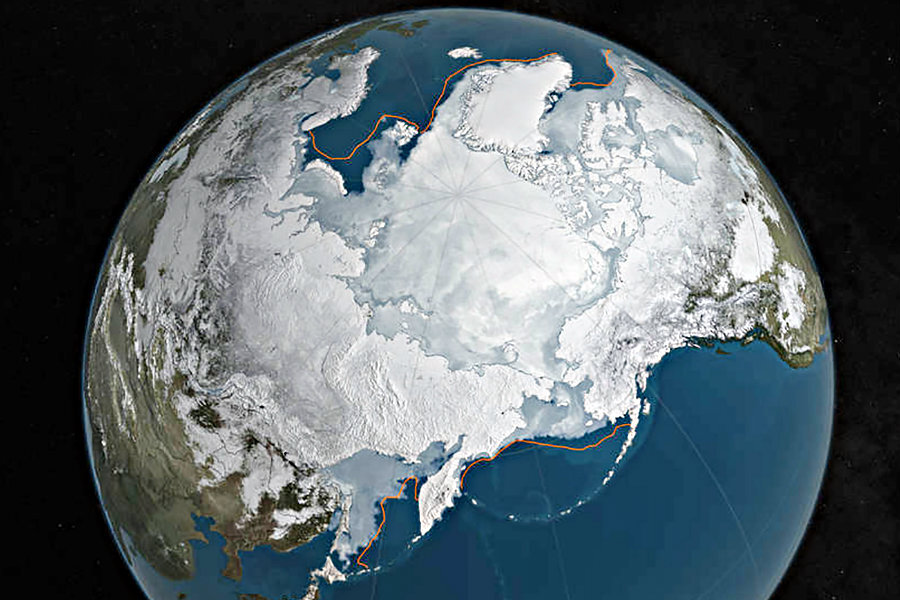Big melt: Arctic sea ice hits record lows
Loading...
It was a warm spring for Arctic sea ice, with sea ice extents reaching record low levels in January, February, and April. Now, scientists say that May beat previous ice cover low records by a huge amount.
Last month, the Arctic averaged twelve million square kilometers of sea ice. The previous record low, set in 2004, was more than half a million square kilometers greater than this year’s record.
In other words, this May’s Arctic ice cover was smaller than the previously set record by an area larger than the state of California.
“We’ve never seen anything like this before,” Mark Serreze, the Director of the National Snow and Ice Data Center (NSIDC), told the Washington Post. “It’s way below the previous record, very far below it, and we’re something like almost a month ahead of where we were in 2012.”
And although this May’s low ice extents beat the previous record by a shocking amount, the unfortunate new record is even more alarming compared to recent ice averages.
This May, sea ice extents were more than a million square kilometers (or the size of three Californias) less than the average for the month between 1981 and 2010. Daily sea ice levels were also about 600,000 square kilometers less than previous years.
And the damage isn’t limited to May. Unfortunately, with ice extents at record lows already, scientists are predicting even lower ice levels for the rest of the year.
The Arctic was around four to five degrees Fahrenheit warmer this spring than it has been in the past, accelerating sea ice melt and preventing sea ice from forming at its usual rates. In March, (NSIDC) research affiliate Walt Meier told The Christian Science Monitor that high winds in the Arctic also impeded this year’s growth.
“We’re in a bad way right now,” said Dr. Serreze.
May’s ice melt is already two to four weeks ahead of what it was in 2012, which set September records for the most ice melt in history. With this year’s heat, scientists are concerned about September.
“All we can say is that we are on a very bad footing,” Serreze told The Washington Post. “However, this is also part and parcel of a longer trend … we’ve always known that the Arctic would be the place most sensitive to climate change, and that’s what we’re seeing.”
“The Arctic is in crisis,” said NSIDC lead scientist Ted Scampos in March. “Year by year, it’s slipping into a new state, and it’s hard to see how that won’t have an effect on weather throughout the Northern Hemisphere.”
[Editor's note: An earlier version stated that melting sea ice causes sea levels to rise, which is incorrect as sea ice is already floating in the ocean. Melting land ice, however, can cause sea levels to rise.]








